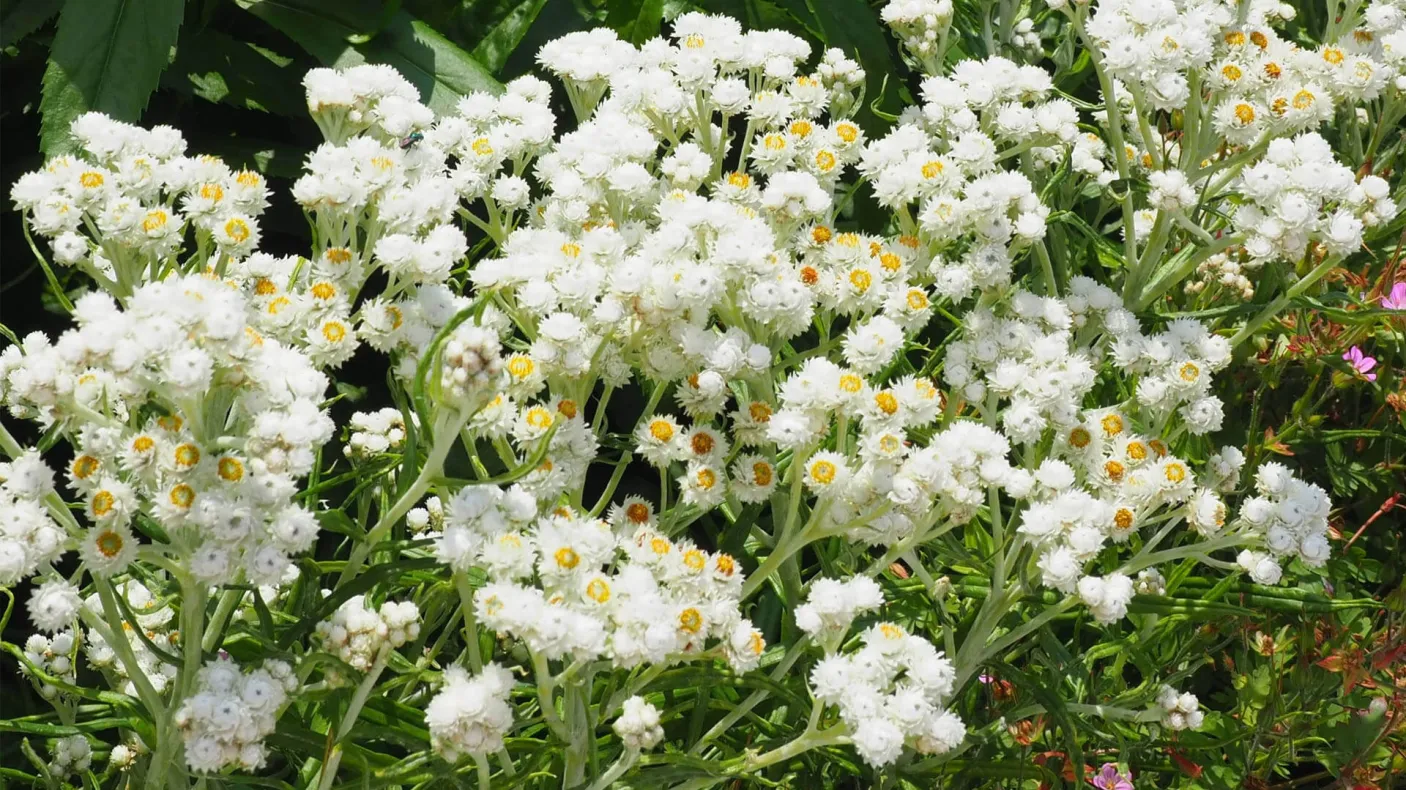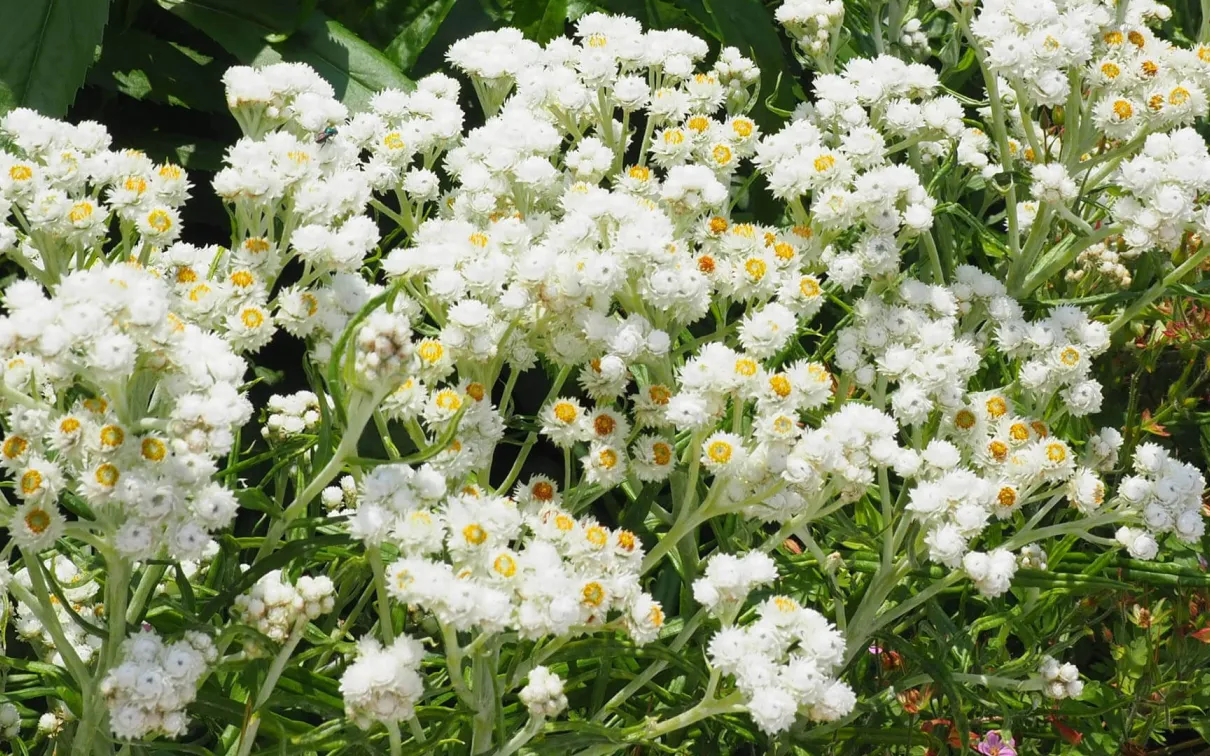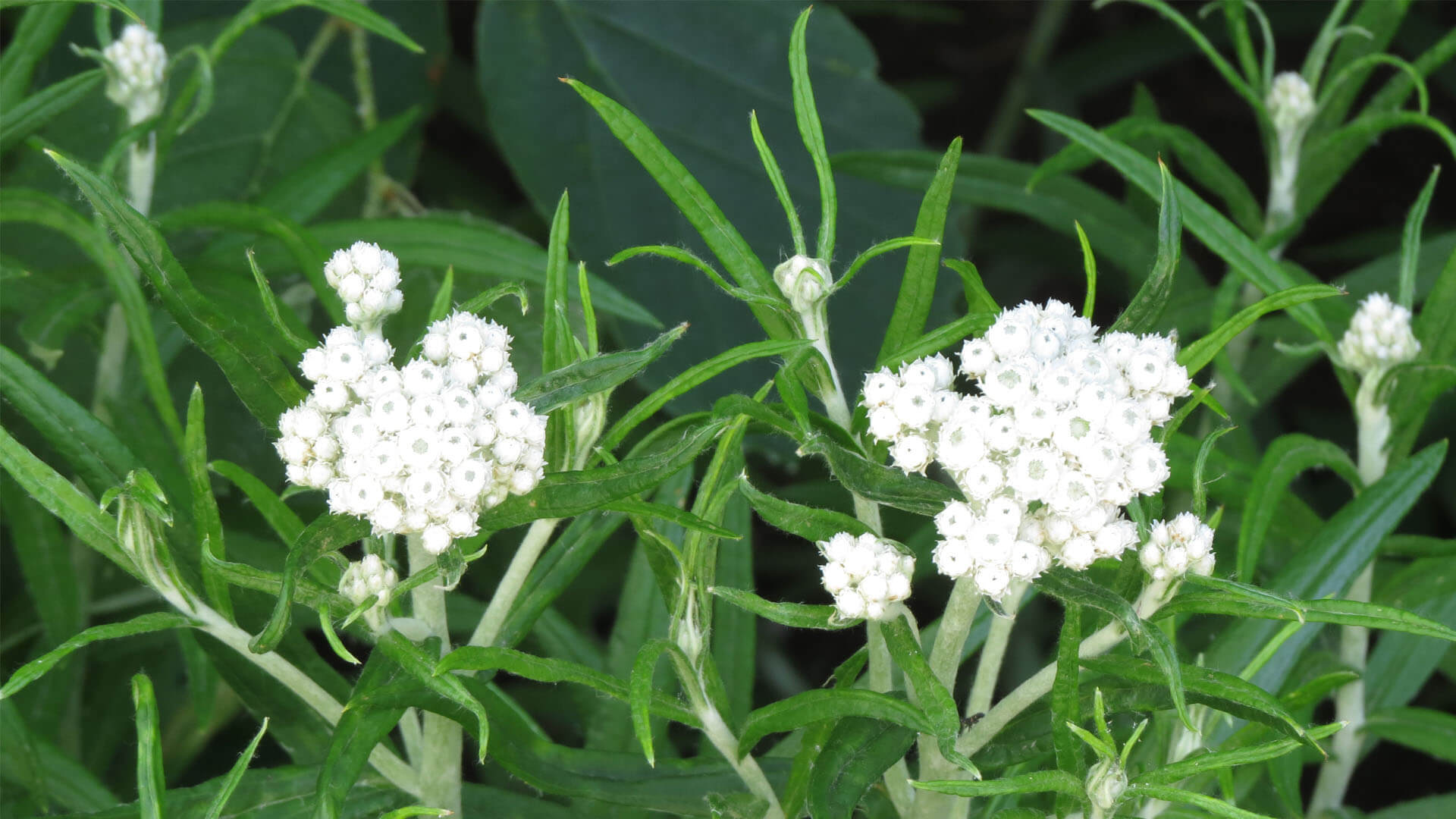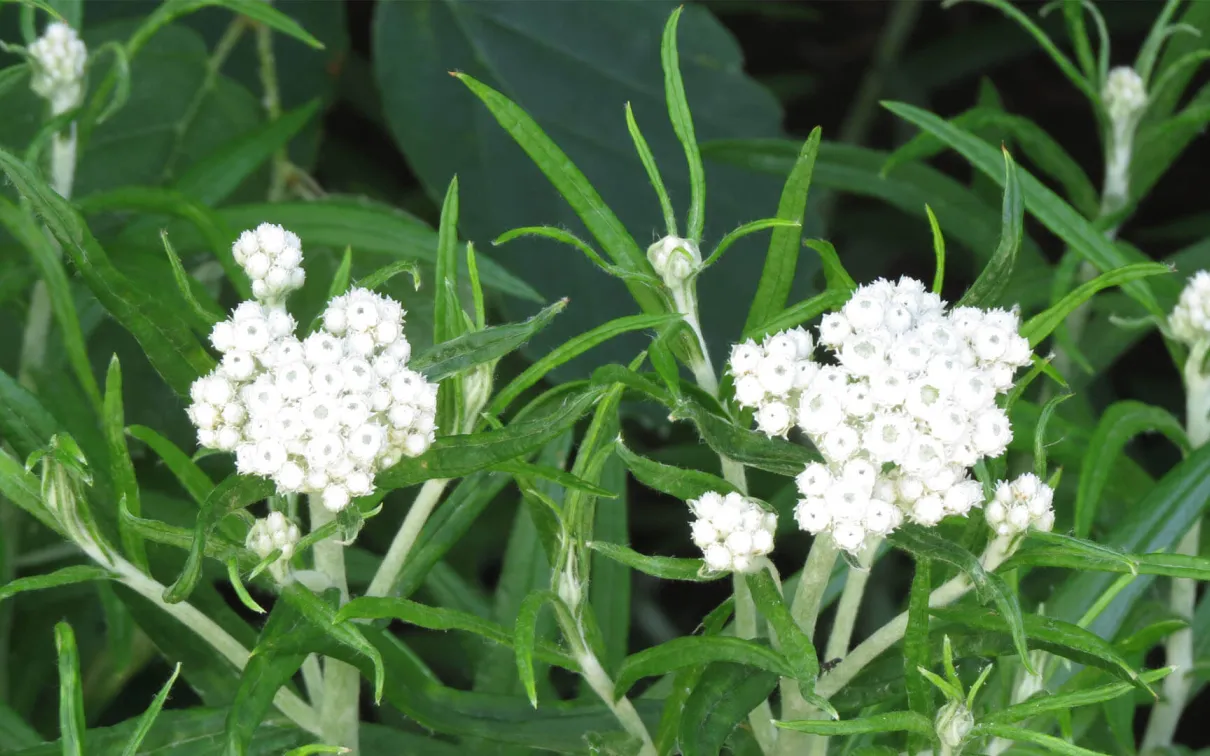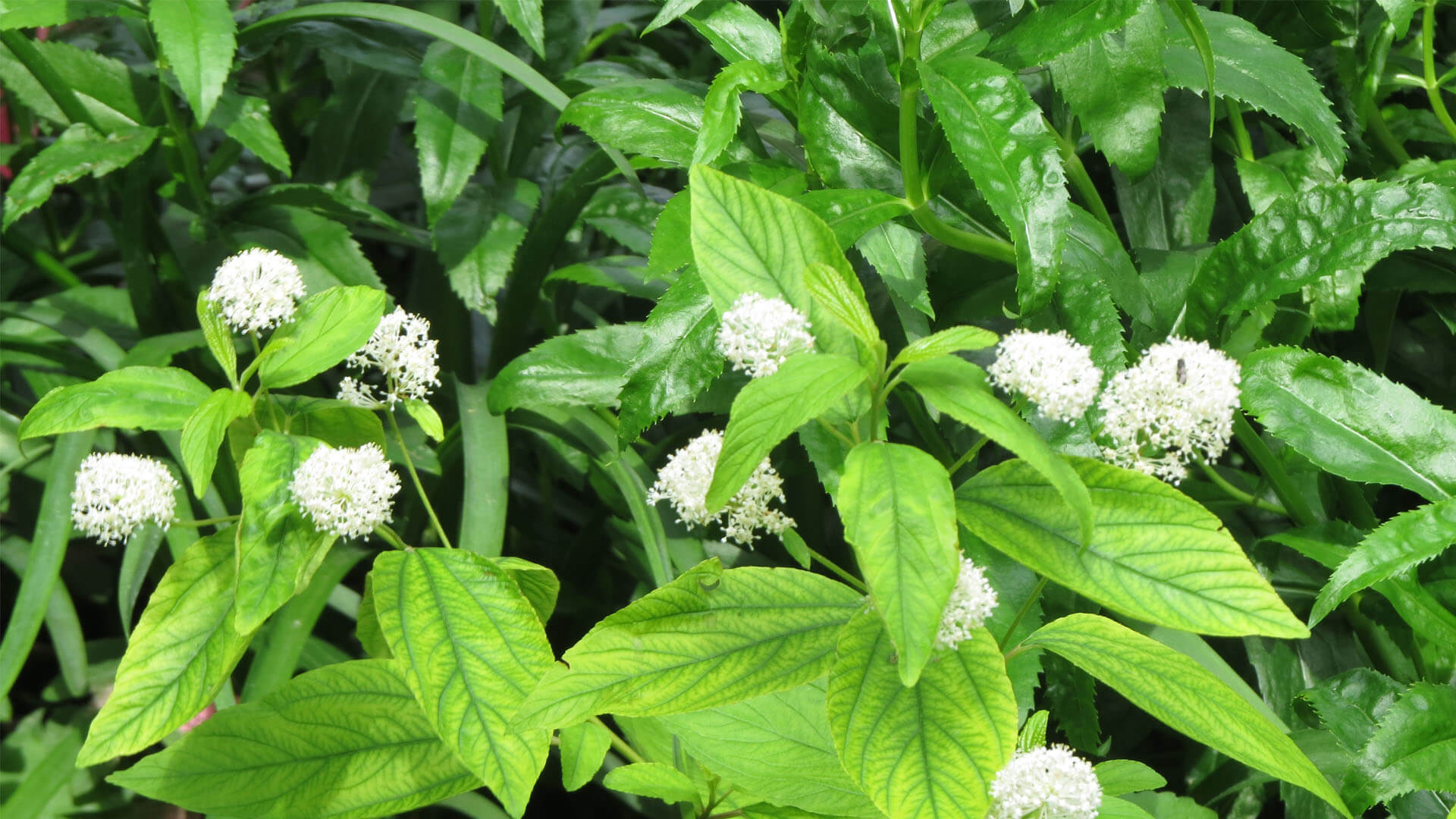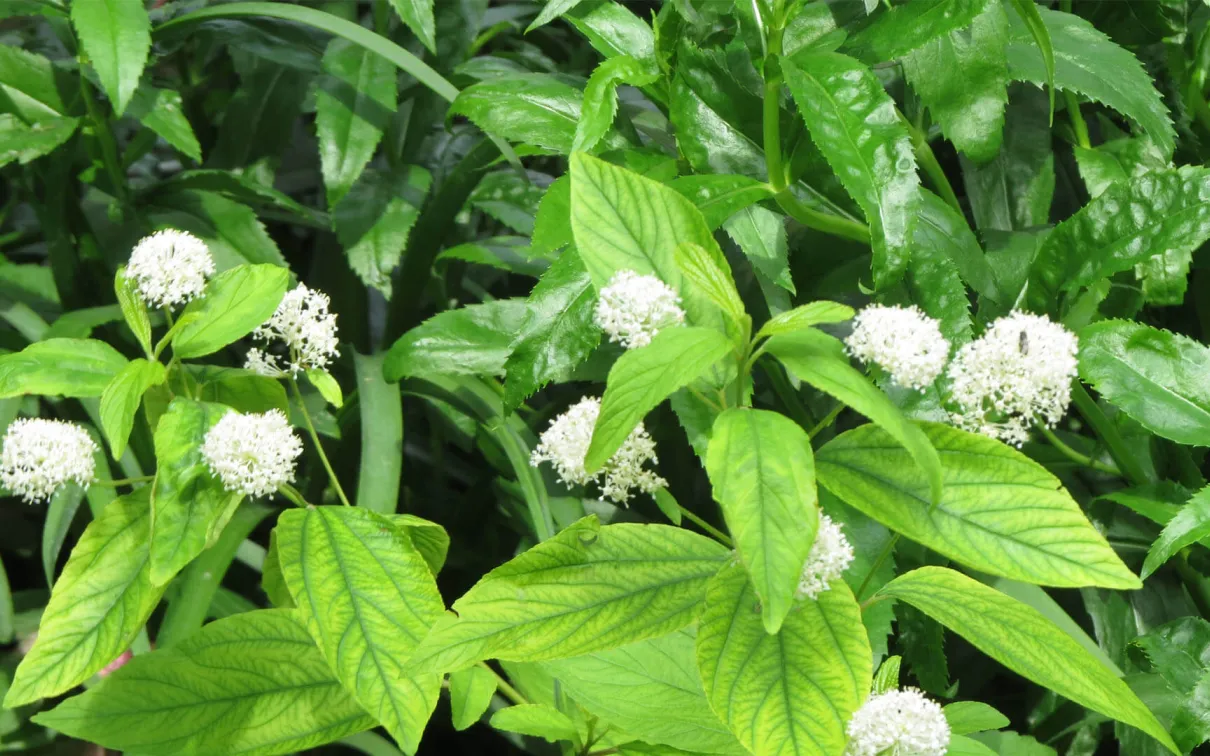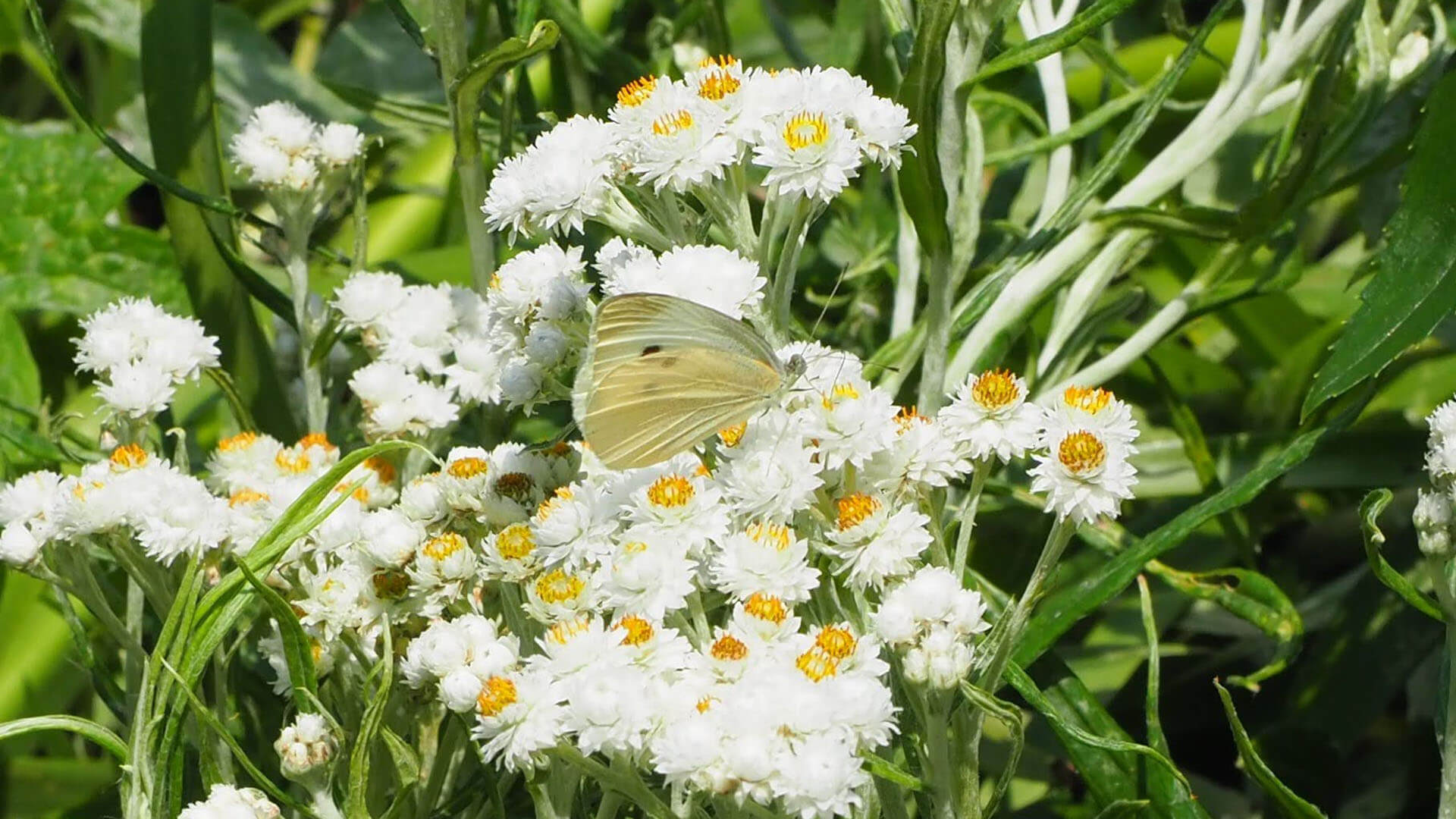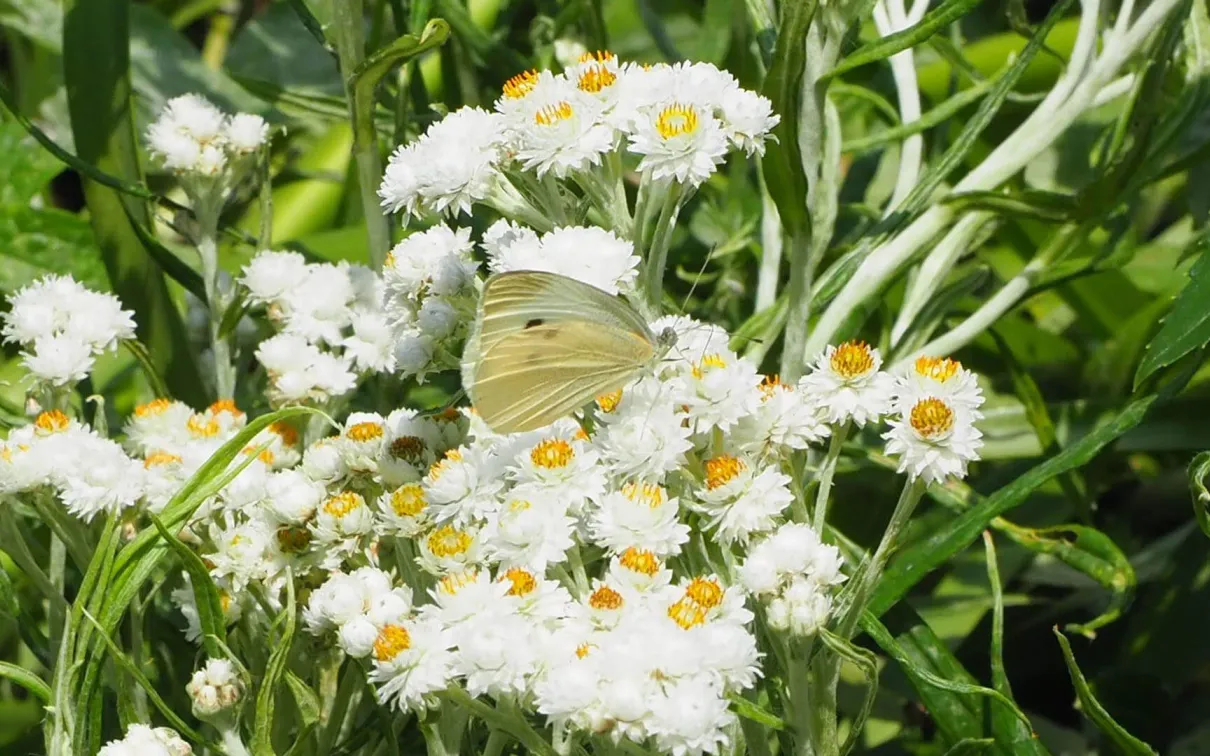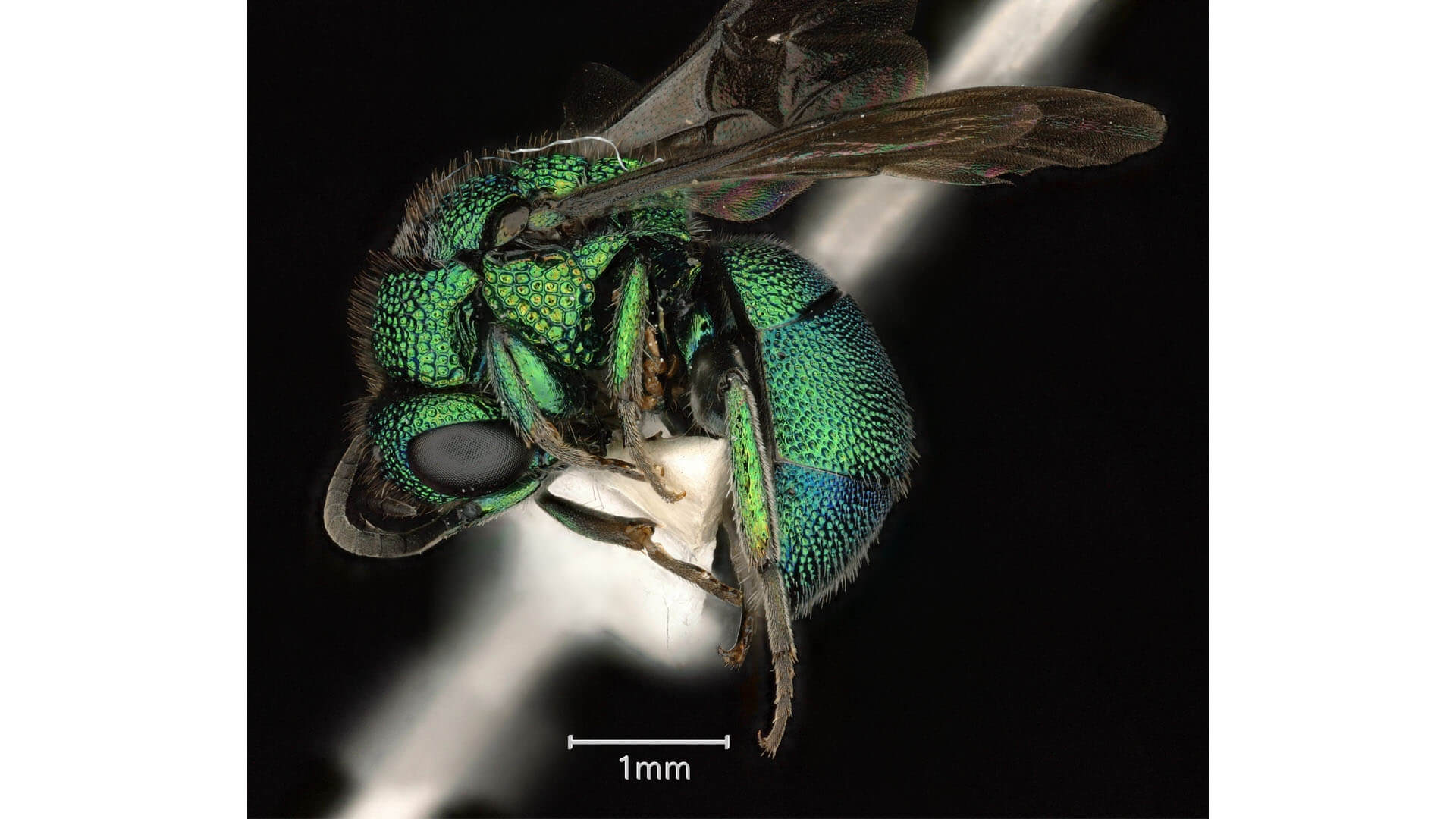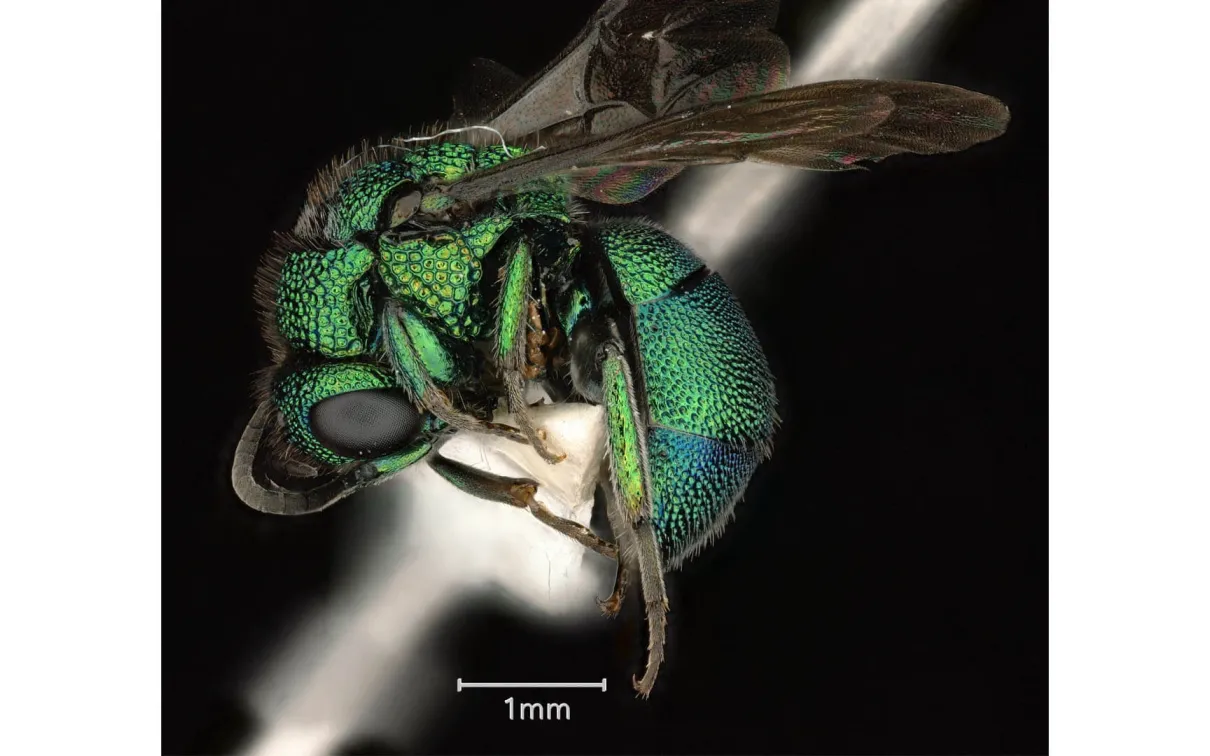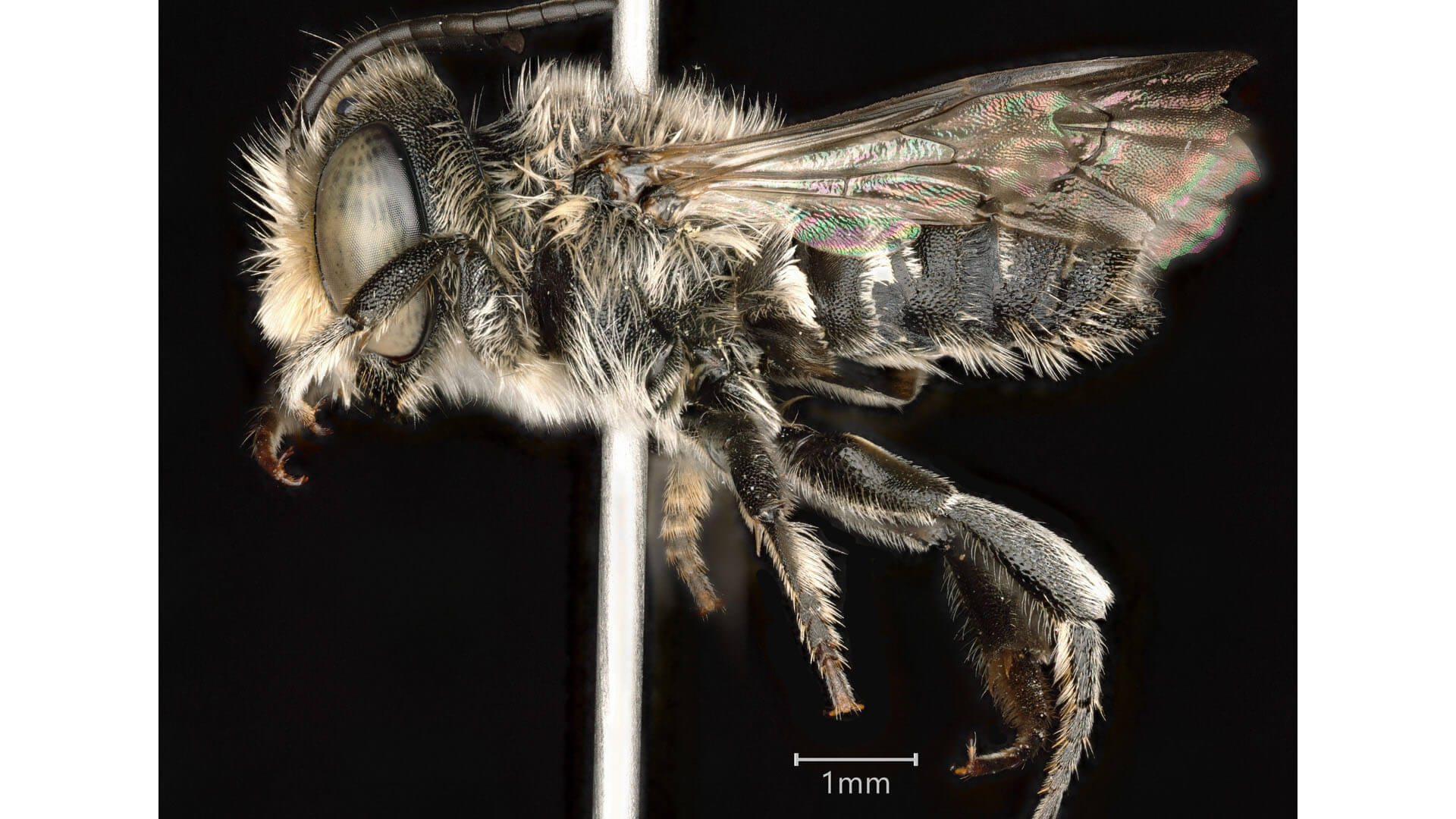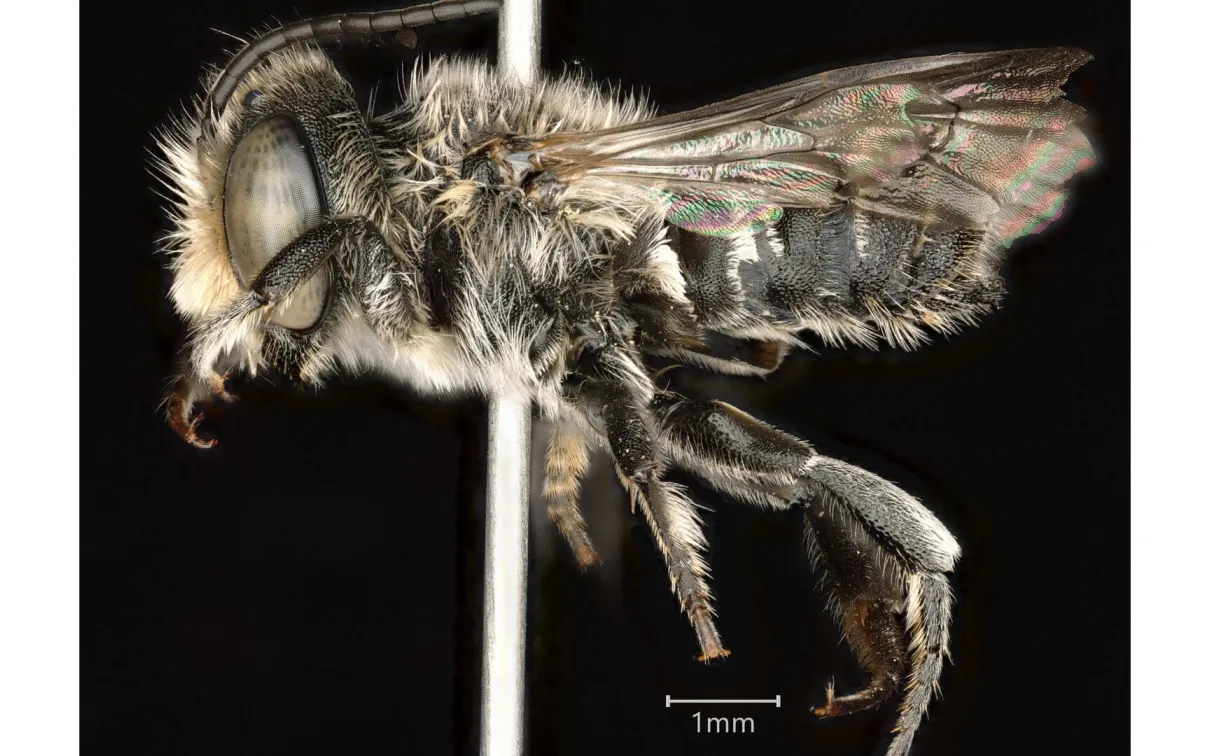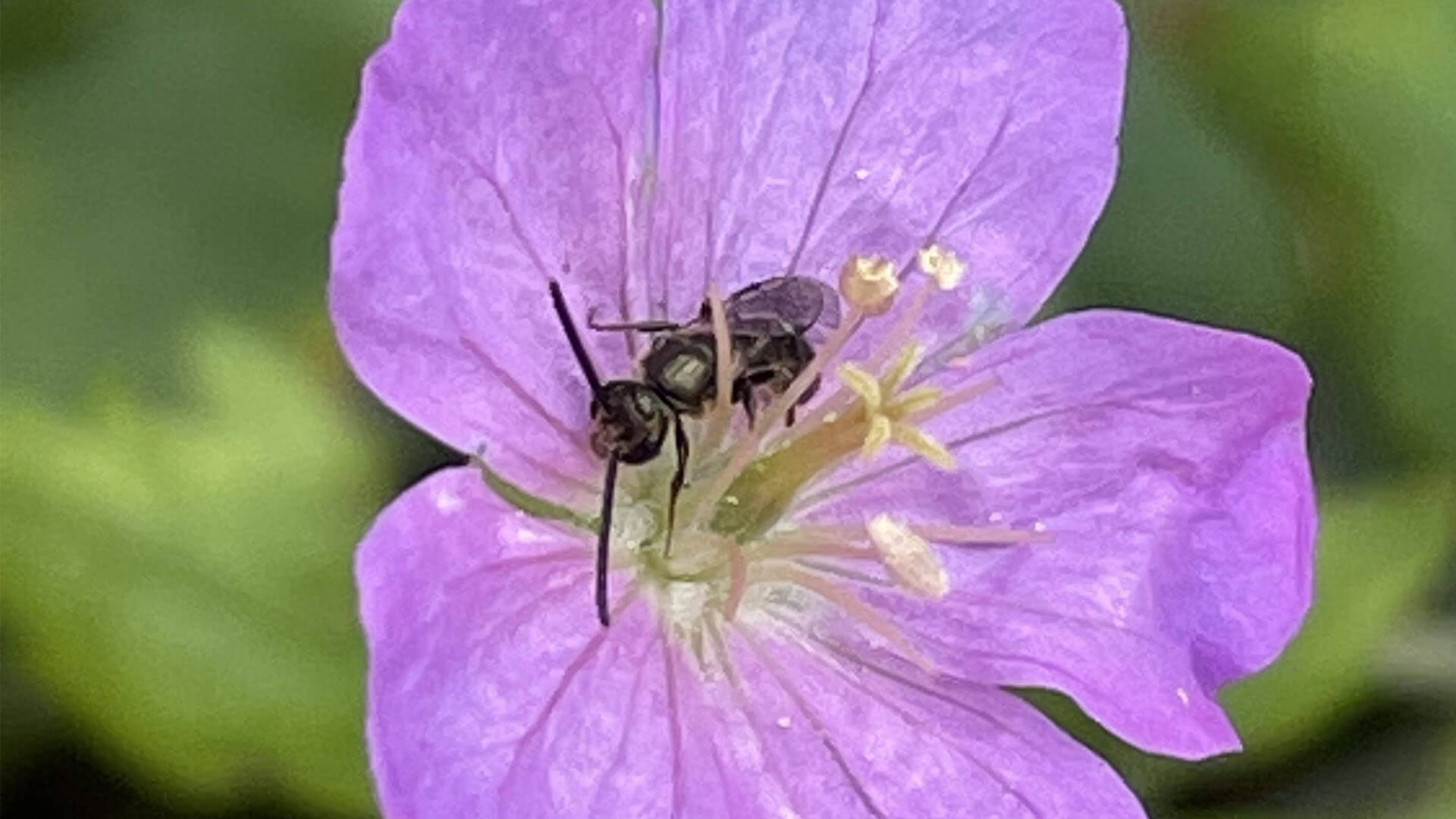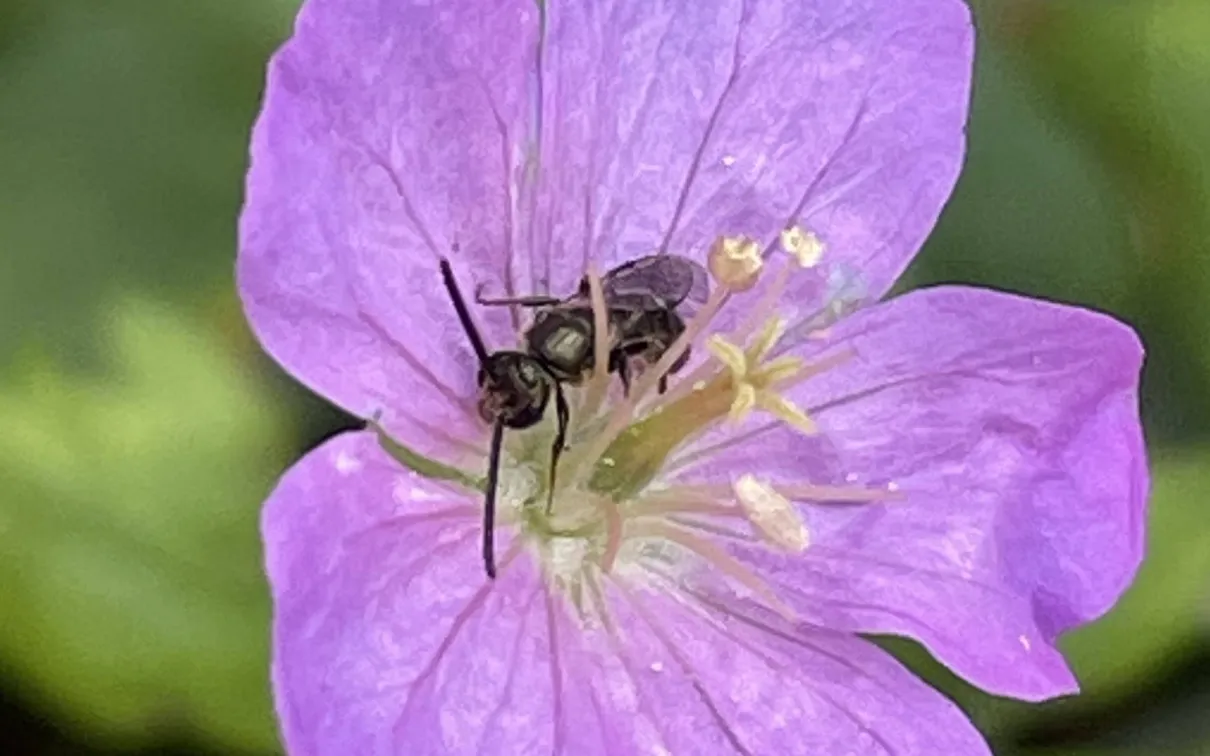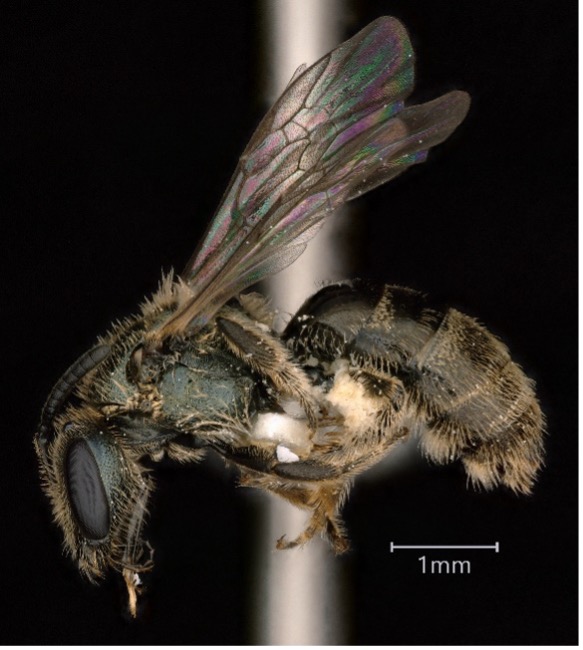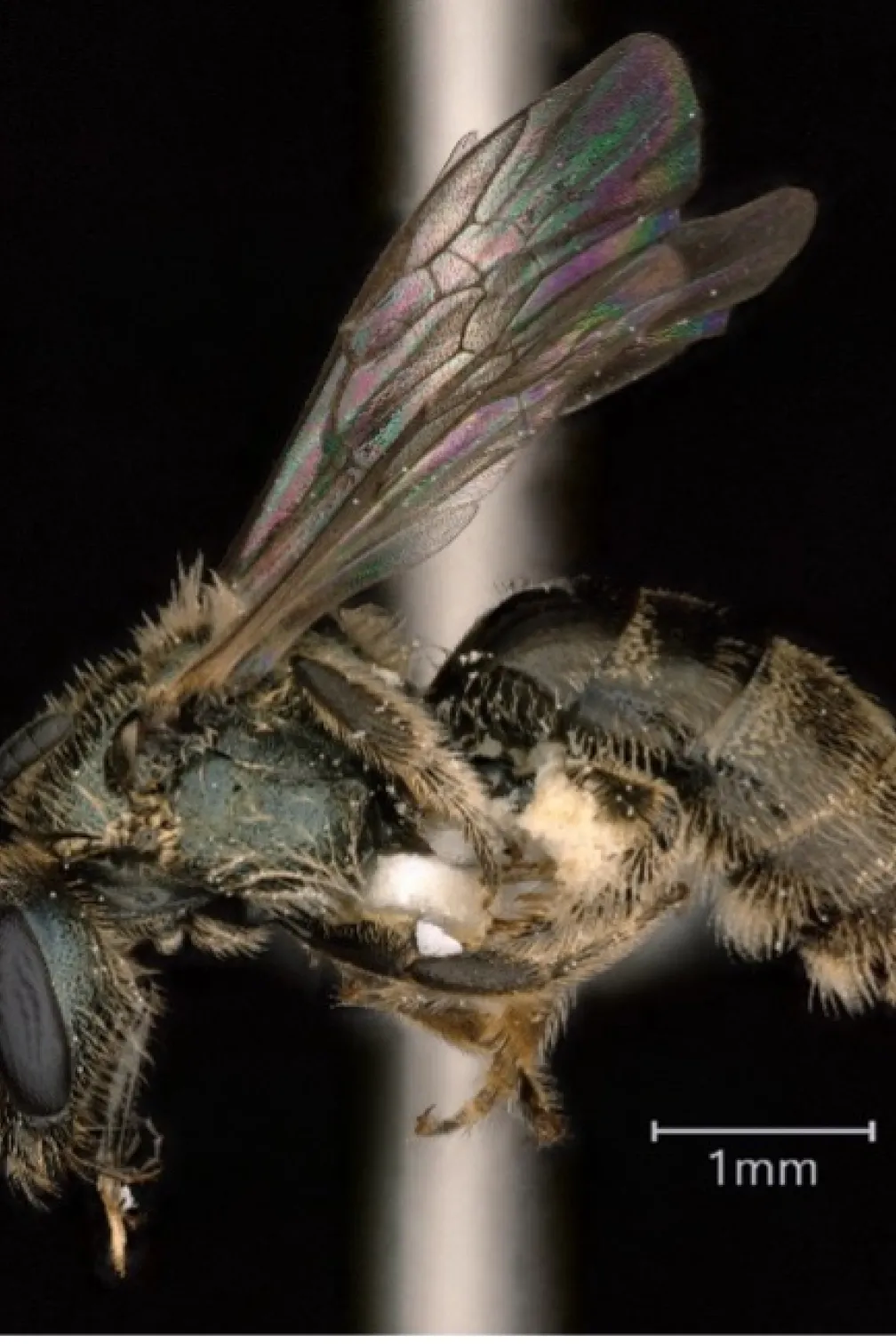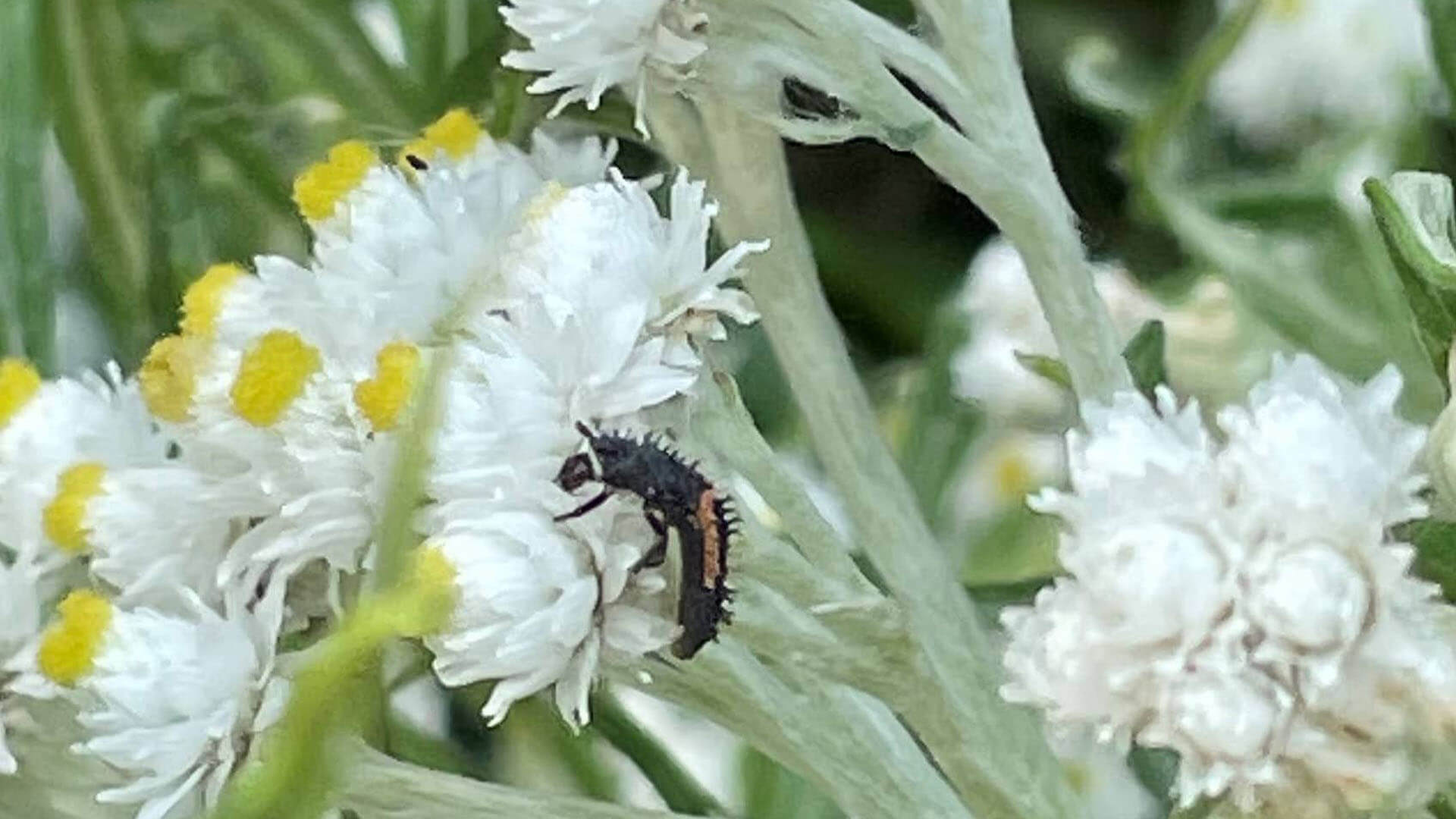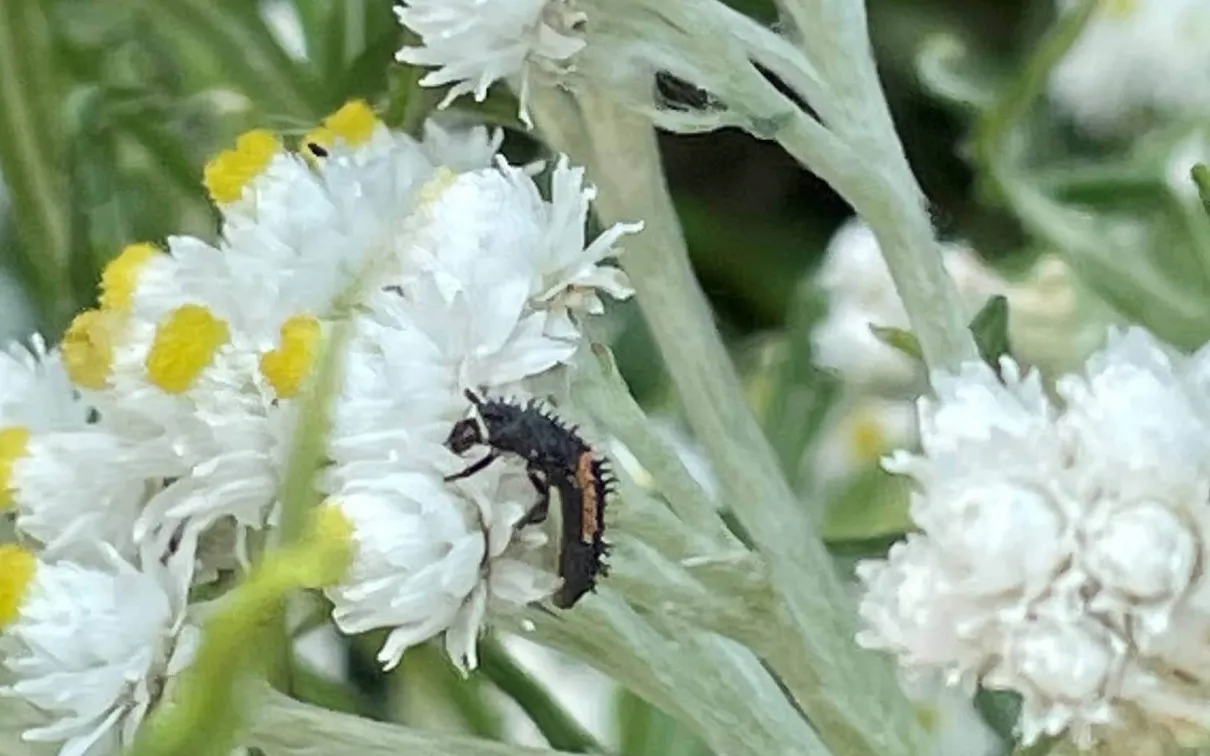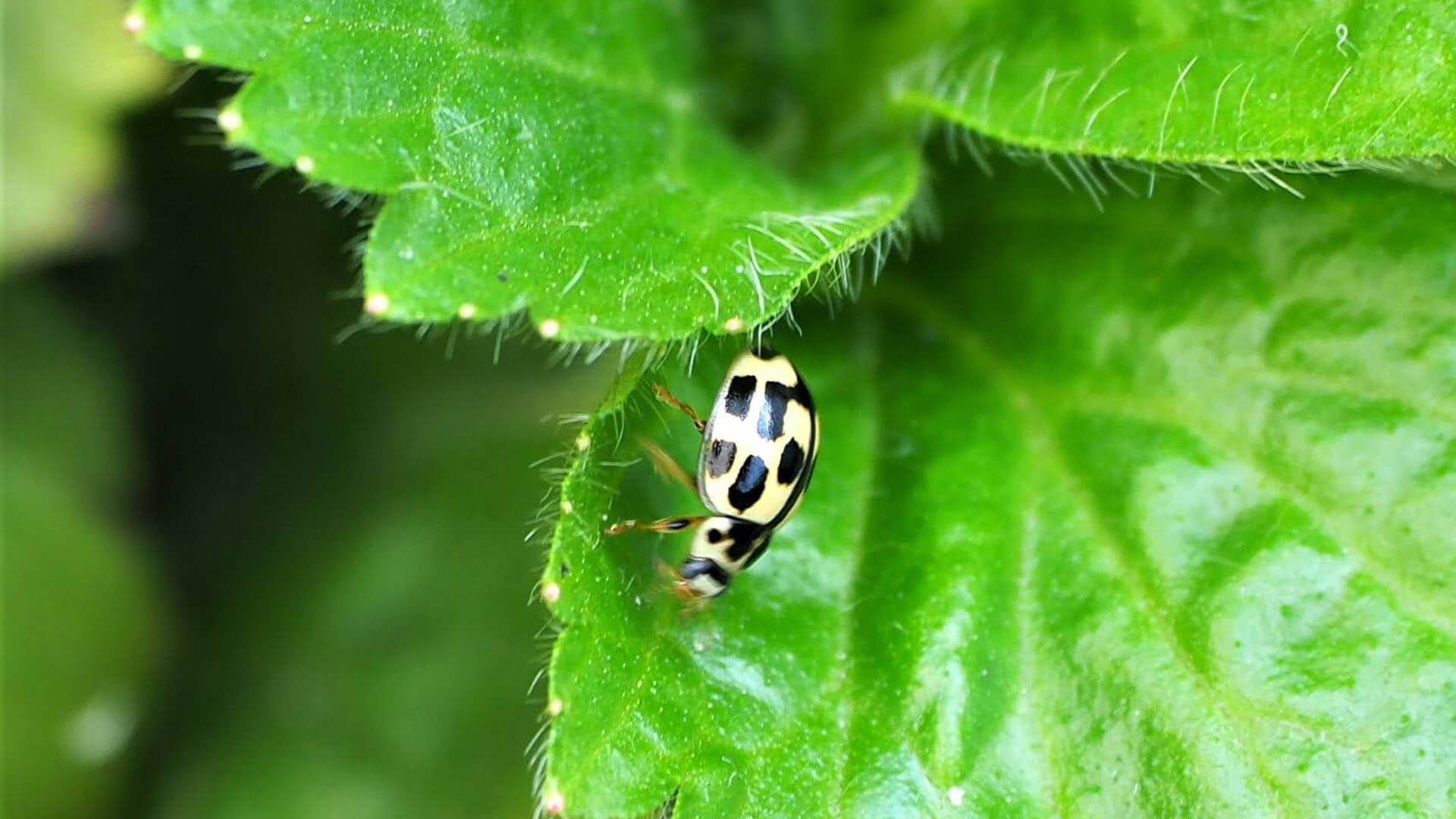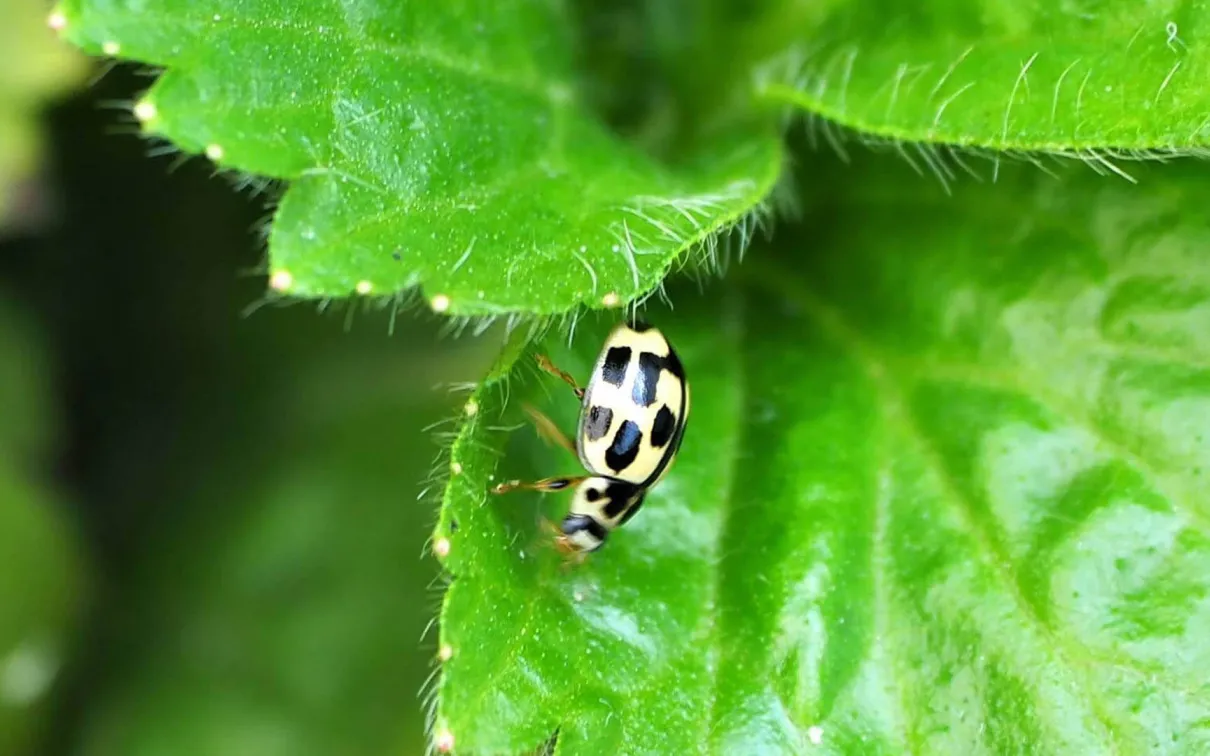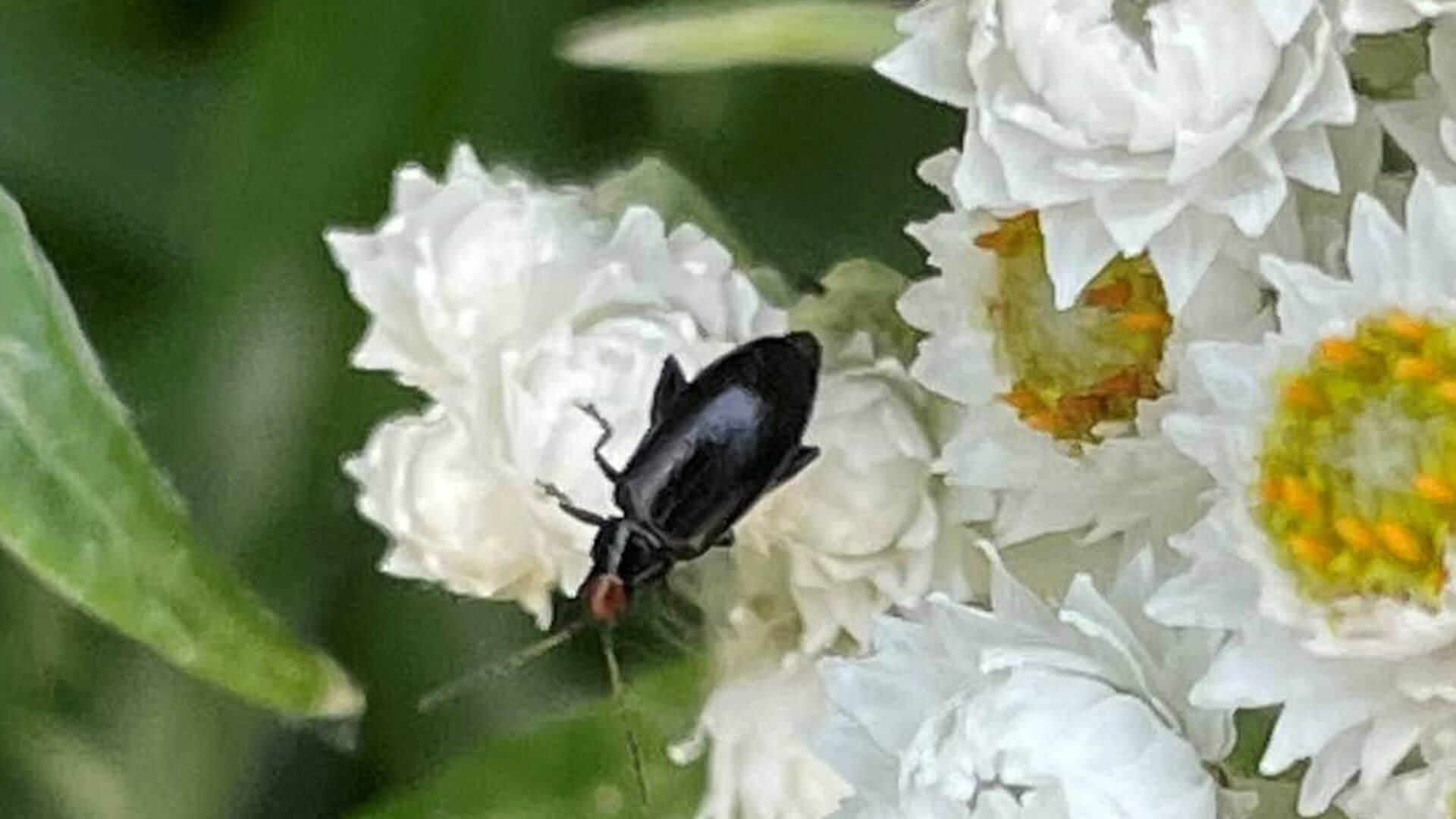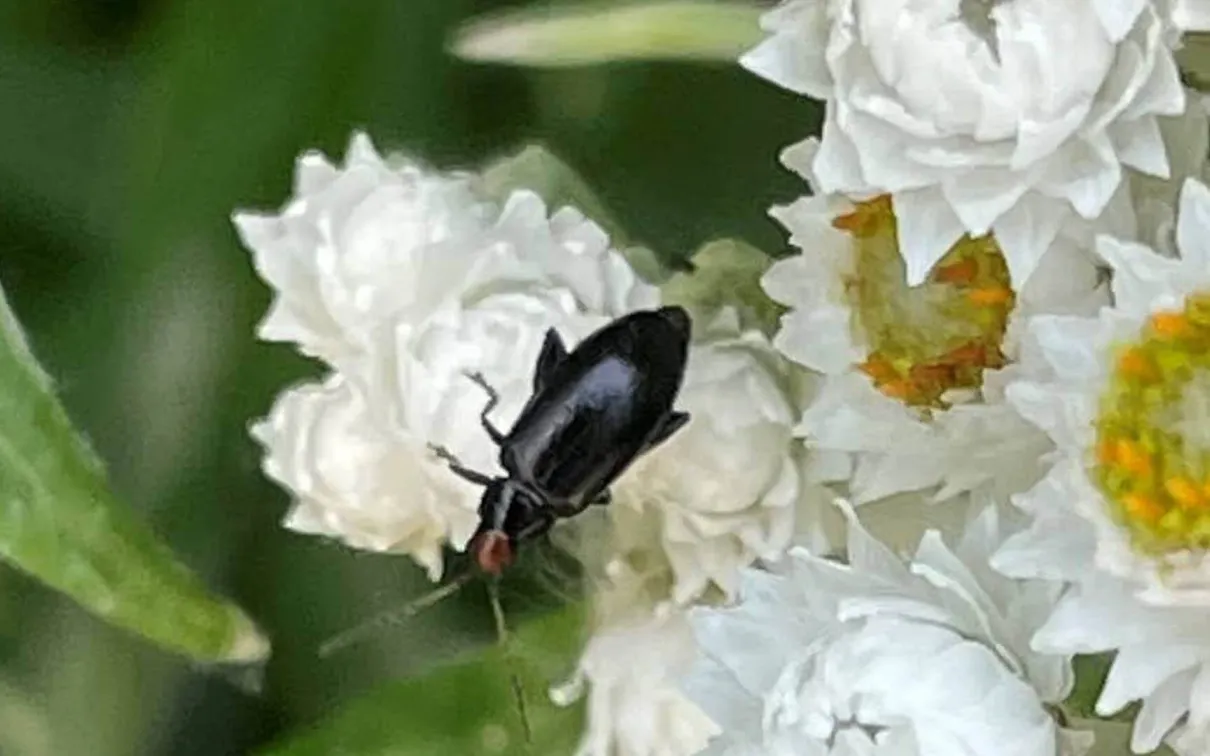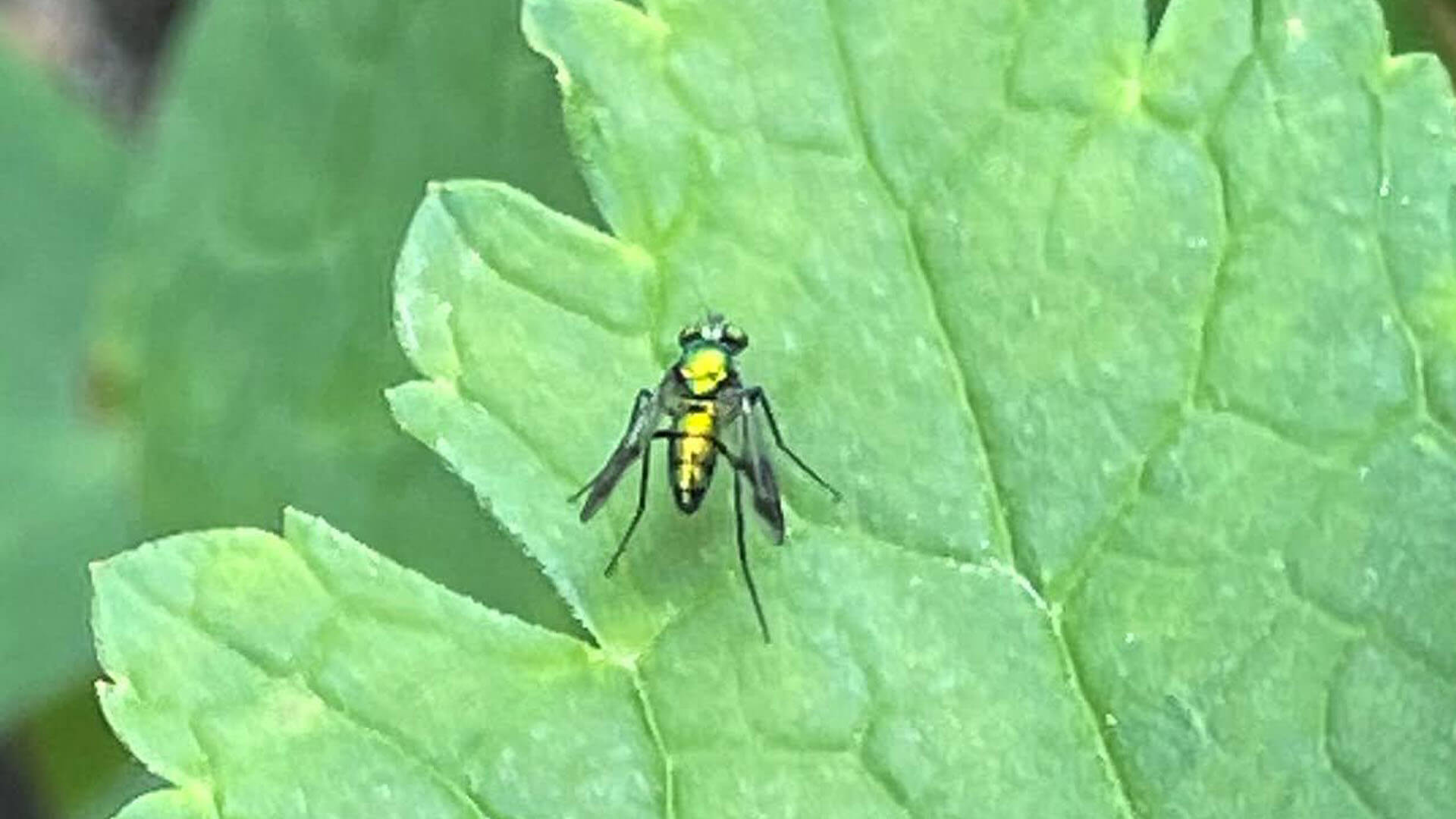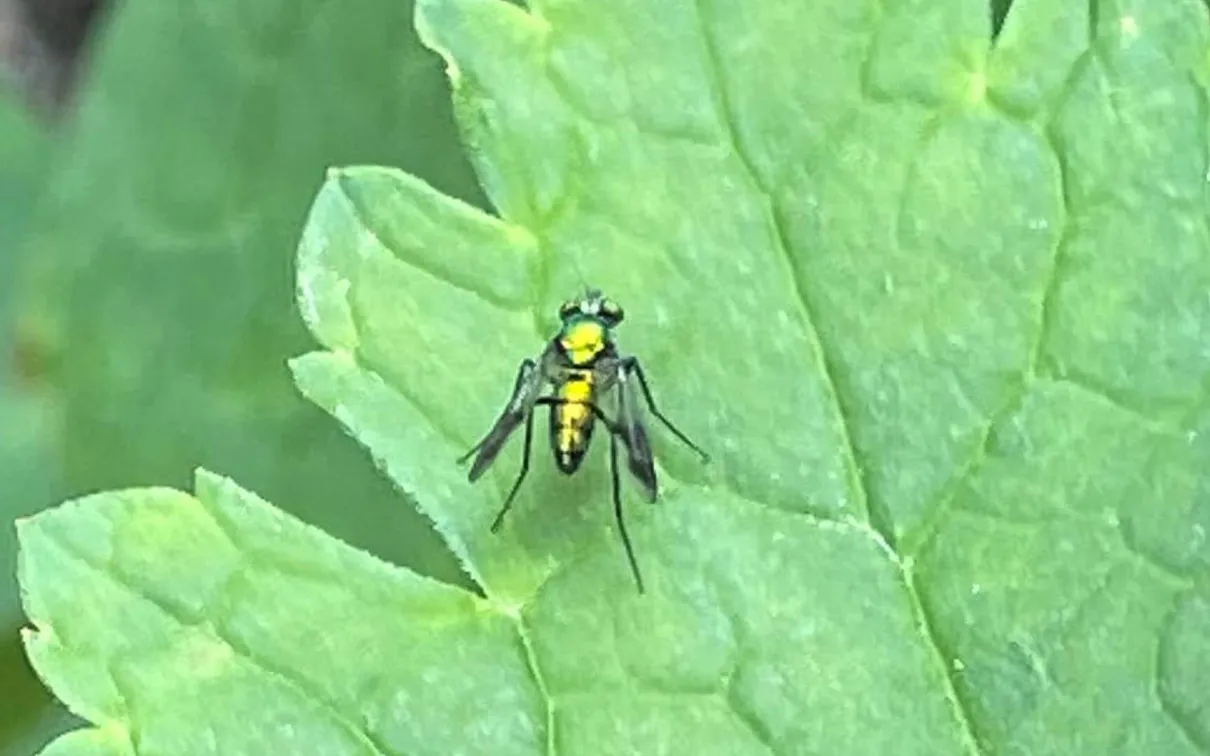Posts from the Plaza: June 25 to July 8
Regular updates on what’s blooming and who’s visiting
Published
Category
Author
Summer is in full swing
Summer is in full swing and we’re seeing new plants blooming and attracting their fair share of visitors. These past couple of weeks, we have been observing the two additional plants that have come into flower, pearly everlasting and New Jersey tea.
Pearly everlasting (Anaphalis margaritacea) is a native plant that lives primarily in dry meadows and roadsides. It gets the pearly part of its name from the white colour of the flower, however, this is a bit misleading. Take a closer look and you’ll notice that the main florets in the centre of the flower are actually yellow and are surrounded by bract-like phyllaries which are white. These phyllaries, which tend to obscure the yellow florets, are dry and papery in texture and last some time, making this flower ideal for dried flower arrangements.
New Jersey tea (Ceanothus americanus)
New Jersey tea (Ceanothus americanus) is a small shrub native to southern Ontario. It has distinctive finely-toothed leaves with three prominent ribs but because of its small size (less than a metre tall) it is often overlooked. Its tiny flowers are white and they appear in thimble-shaped clusters. The leaves when dried reportedly make an excellent tea that was very popular during the 1800s. This plant was difficult to see because of the construction on the plaza, it was behind an orange plastic fence when it was flowering. The fence is now gone but so are the flowers. You might notice there is a small wasp on one of the flowers but unfortunately we couldn’t get close enough to identify it or get a good photo of it. In a few weeks time, the flowers will be replaced by clusters of orange-red berries, and if we are lucky—it will flower again in the Fall.
The flowering pearly everlasting
The flowering pearly everlasting is attracting lots of insects these days. This plant is the host for caterpillars of American Lady (Vanessa virginiensis) Butterflies.
A blue butterfly was spotted but not identified. It may have been a Summer Azure (Celastrina neglecta) given that New Jersey Tea is one of its caterpillar food plants.
The ubiquitous Cabbage White (Pieris rapae) butterfly visited the garden. These introduced butterflies are one of the most common butterflies you will see anywhere in Ontario throughout the spring, summer, and fall seasons.
Other insect visitors
Species of the cuckoo wasps, from the family Chrysididae, are some of the most beautiful wasps. These solitary wasps have a stunning metallic colour. They lay their eggs in the nests of other insects where the larvae consume the eggs, larvae, and even the food provided to the host’s larvae.
The alfalfa leafcutter
The alfalfa leafcutter (Megachile rotundata) was accidentally introduced into North America prior to the 1940s and is now the most important pollinator of alfalfa. Most leafcutter bees are generalist pollinators and will visit many different types of plants.
Species in the genus Lasioglossum (Dialictus)
Species in the genus Lasioglossum (Dialictus) are abundant and commonly seen bees although few people recognize them. Sweat bees, as they are commonly known, nest in the ground (mostly). The bee on the wild geranium could be a Lasioglossum (Dialictus) like the one collected by Doug Currie, Senior Curator of Entomology at the ROM.
Gallery 1
Voracious predators
Voracious predators, such as this larva of the multicoloured Asian ladybird beetle (Harmonia axyridis) and this 14-spotted ladybird beetle (Propylea quaturodecimpunctata), feed on plant pests especially aphids. Both species are introduced to our area and the adults of the former aggregate indoors to overwinter.
Gallery 2
The red-headed flea beetle
The red-headed flea beetle (Systena frontalis) is a native, common pest of wild and commercial plants in the US. It likes to feed on cranberries as well as blueberries, corn, grape, lettuce, soybean, and various Brassica species. They skeletonize the leaves but also feed on buds, flowers, and fruit.
Condylostylus patibulatus
Condylostylus patibulatus, a long-legged fly (family Dolichopodidae), are predators of smaller plant insects like mites and aphids. They move quickly, flying from leaf to leaf. Not much is known about this genus.
Antonia Guidotti
Antonia Guidotti is an Entomology Technician at the ROM.
Kevin Seymour is Assistant Curator, Palaeontology at the ROM.
